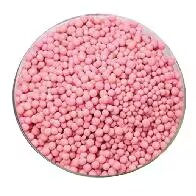1. Magnesium is a component of chlorophyll (the content of magnesium in chlorophyll is about 2.7%), both chlorophyll a and chlorophyll b contain magnesium. Once the plant lacks magnesium, its chlorophyll synthesis will be affected, thus affecting the photosynthesis of the plant.
2. Magnesium is an activator of many enzymes. Magnesium is required to participate in a series of enzymatic reactions in plants. For example, magnesium is more effective than other ions in activating phosphokinase.
3. Magnesium is a bridging element linked to ribosomal subunits, which can ensure the stability of ribosomal structure and provide a place for protein synthesis.
4. Magnesium can promote the synthesis of vitamin A and vitamin C.
5. Magnesium is involved in nitrogen metabolism and can promote fat synthesis.
6. Magnesium can activate the synthesis of DNA and RNA (magnesium is necessary for stabilizing ribosomal particles, especially polyribosomes, and for functional RNA protein particles to synthesize proteins in sequence with amino acids and other metabolic components).
7. Magnesium can promote the absorption of phosphorus and silicon by crops and enhance the nutritional metabolism of phosphorus (magnesium ion can stimulate the activity of many Phosphotransferases, and can also be used as a carrier of phosphate to promote the operation of phosphate in crops).
Post time: Sep-01-2023






